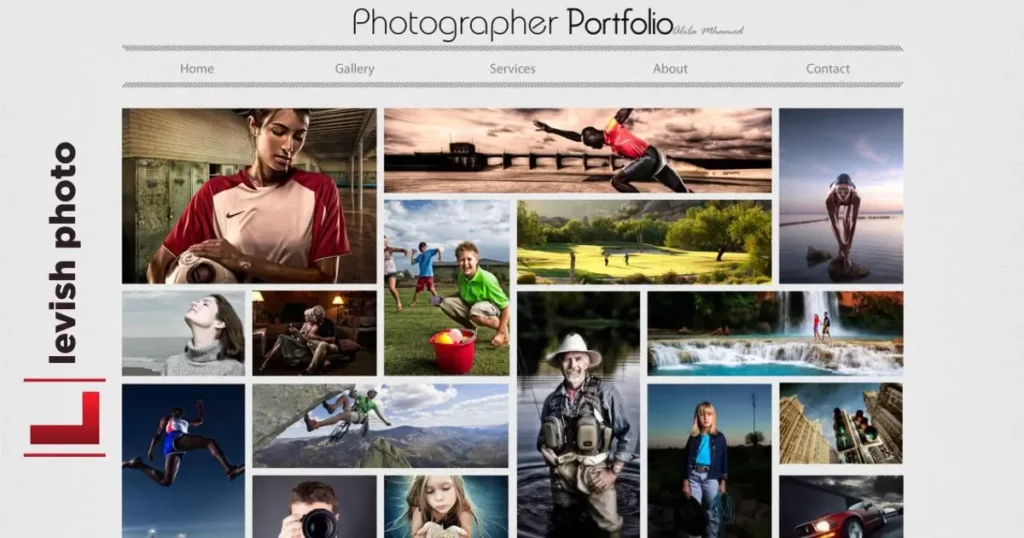A photography portfolio is a collection of a photographer’s best work. It’s like a showcase that highlights their skills, style, and expertise through a selection of photographs. This compilation serves as a visual resume for photographers.
It’s a common query among aspiring photographers and professionals alike. Curious about how many pictures should be in a photography portfolio? The ideal number isn’t set in stone, it depends on various factors such as the purpose of the portfolio.
Determining the number of pictures for a photography portfolio involves thoughtful curation. While there’s no one-size-fits-all answer, typically, a portfolio may range from 15 to 30 images. The selection should showcase diversity, technical prowess, and a cohesive style.
Importance of a Well-Crafted Portfolio
A well-crafted photography portfolio acts as a visual introduction, showcasing a photographer’s skills, style, and range of expertise. It’s the passport into the creative world, offering a glimpse into their unique perspective. This collection of images isn’t just a showcase; it’s a testament to their talent and professionalism.
A carefully curated portfolio speaks volumes about a photographer’s ability to capture moments, evoke emotions, and communicate stories through imagery. It serves as a powerful tool for making first impressions, attracting potential clients, and leaving a lasting impact in a competitive industry where visuals hold immense sway.
Defining the Optimal Portfolio Size
Determining the ideal size for a photography portfolio is a delicate balance between quality and quantity. There’s no universal number set in stone; instead, it’s about presenting a compelling narrative through carefully selected images. Portfolios can range from 15 to 30 images, but this varies based on multiple factors.
The key is to include enough photographs to showcase versatility and expertise without overwhelming the viewer. Finding this sweet spot ensures that each image holds significance, contributing meaningfully to the overall story the photographer wants to convey.
Considerations for Portfolio Selection
When assembling your photography portfolio, several factors warrant consideration. Purpose reigns supreme. Understand why you’re crafting this collection, is it for client pitches, job applications, or personal branding? Tailoring the content to suit this purpose ensures relevance.
Diversity plays a crucial role. While showcasing versatility is vital, coherence matters just as much. Aim for a balanced mix that highlights your skills without appearing disjointed. Quality triumphs over quantity. Selecting a limited number of high-impact images is more effective than flooding the portfolio with mediocre shots.
Determining Your Portfolio’s Purpose
Before assembling your portfolio, pinpoint its purpose. Are you seeking commercial work, showcasing your expertise, or applying to a specific niche? Understanding the intended use helps shape your selection criteria. For instance, a portrait photographer may emphasize diverse human emotions.
A landscape photographer might highlight various terrains and lighting conditions. Defining the purpose clarifies what to include and tailors your portfolio to resonate with your target audience. Whether it’s for potential clients, exhibitions, or job applications, aligning your portfolio’s purpose sharpens its impact.
Showcasing Diversity in Your Work
Aim for diversity in your portfolio by displaying a range of subjects, styles, and techniques. Varying subjects portraits, landscapes, and still life demonstrate versatility, appealing to a broader audience. Diversifying styles, such as black and white versus vibrant colors, highlight your adaptability and creative range.
Showcasing various techniques, like long exposures, close-ups, or unique perspectives, exhibits your technical skills. Diversity doesn’t mean quantity, rather, it’s about presenting a well-rounded representation of your capabilities.
Curating the Best Shots
Selecting the best shots for your portfolio is pivotal. It’s not about the number but the impact and quality of each image. Assess each photo objectively considering composition, lighting, storytelling, and technical excellence. Pick images that resonate with your style and align with your portfolio’s purpose.
A smaller selection of exceptional photos creates a stronger impact than a larger collection with mediocre shots. Focus on showcasing your absolute best work, ensuring each photo contributes meaningfully to the overall narrative of your portfolio.
Specialization and Its Impact on Portfolio Size
The breadth of your specialization significantly influences the size of your portfolio. A niche photographer focusing solely on landscapes might have a smaller yet more profound portfolio than a generalist covering various genres. Specialization allows for a focused, curated selection that embodies expertise in that particular field.
Broader scopes demand more images to exhibit versatility. Balancing specialization and breadth becomes pivotal, a few stellar images can represent a specialized niche, while a broader scope might require a carefully chosen array to cover diverse areas.
Steps to Curating an Effective Portfolio

The time taken to learn photography varies widely based on individual dedication and learning pace. Mastering technical skills can take several months to a few years, while developing a unique style and creating a strong portfolio may take additional time, often ranging from one to three years or more.
Then, tailor your selection to cater to your audience’s preferences or industry standards, emphasizing quality and variety. Curating a concise yet impactful story through your images is crucial to ensure each photo contributes to the narrative you want to convey. Iterate and refine.
Tips for Tailoring Portfolios to Different Audiences
When tailoring your photography portfolio for various audiences, it’s crucial to consider their preferences and interests. Different viewers might seek distinct qualities in your work based on their needs.
| Audience | Portfolio Emphasis |
| Commercial Clients | Highlight brand alignment, diverse commercial projects, and marketable aesthetics. |
| Artistic Community | Showcase creativity, unique perspectives, and conceptual photography. |
| Photojournalism Enthusiasts | Feature impactful storytelling and documentary-style images. |
| Weddings & Events | Display emotional moments, storytelling, and a diverse range of event coverage. |
Adapting your portfolio for different audiences involves tailoring not only the selection of images but also the presentation format. Consider creating separate sections or versions of your portfolio that cater specifically to each audience’s expectations and interests.
Crafting a Narrative Through Images
Photography has a unique storytelling power. When crafting a narrative through your images, think of your portfolio as a visual storybook. Begin with a compelling opener, a captivating image that immediately draws the viewer in. Progress through your portfolio with a flow that tells a cohesive story, showcasing a variety of shots.
Each image contributes a chapter to your visual narrative. There’s a seamless transition from one photograph to another, maintaining a consistent tone, mood, or style throughout the portfolio. Think about the emotions or messages you aim to convey and curate your images accordingly.
FAQs
How do I customize my portfolio for different audiences?
Tailor your portfolio by emphasizing aspects that resonate with each audience highlight commercial projects for clients, and showcase creativity for art enthusiasts.
What makes a portfolio tell a compelling visual story?
A compelling visual story in a portfolio is crafted through a cohesive sequence of images that collectively convey emotions, themes, or messages, creating a narrative flow.
Should I include all my best work in my portfolio?
Focus on quality over quantity. Curate your portfolio to include your best work that aligns with your niche or specialization, aiming for a cohesive and impactful collection.
How can I ensure my portfolio engages the viewer?
Engage viewers by maintaining a consistent theme or style throughout your portfolio, creating a flow that guides them through a visual journey.
Conclusion
In the realm of photography portfolios, the essence lies not just in the number of images but in the storytelling and tailored presentation. Striking a balance between quality and quantity is pivotal. Consideration of audience preferences and crafting a narrative through the arrangement of images are fundamental elements in creating an impactful portfolio.
Tailoring portfolios to suit various viewers ensures that your work speaks directly to their interests, establishing a deeper connection and potential opportunities within different spheres of the photography world.
